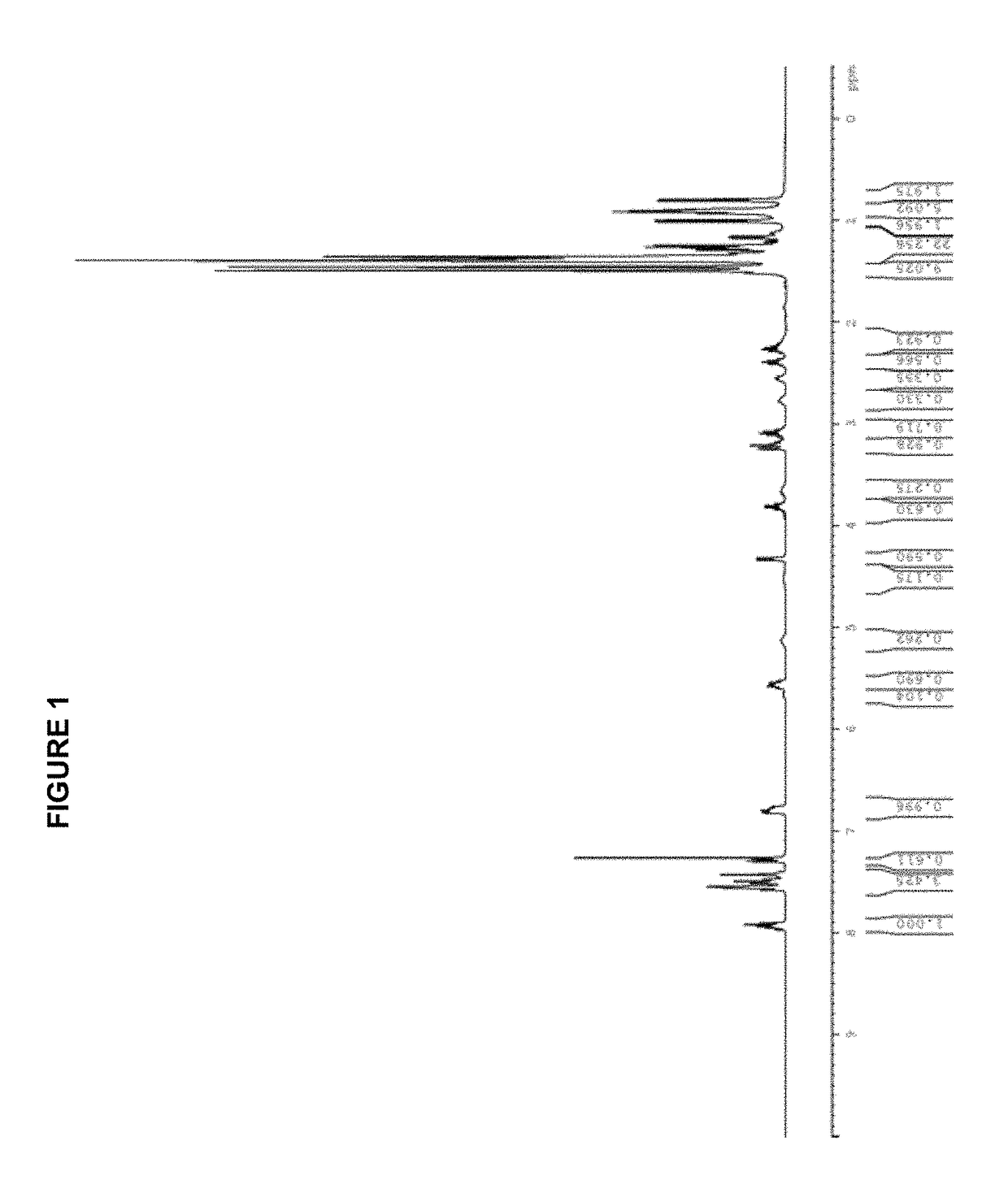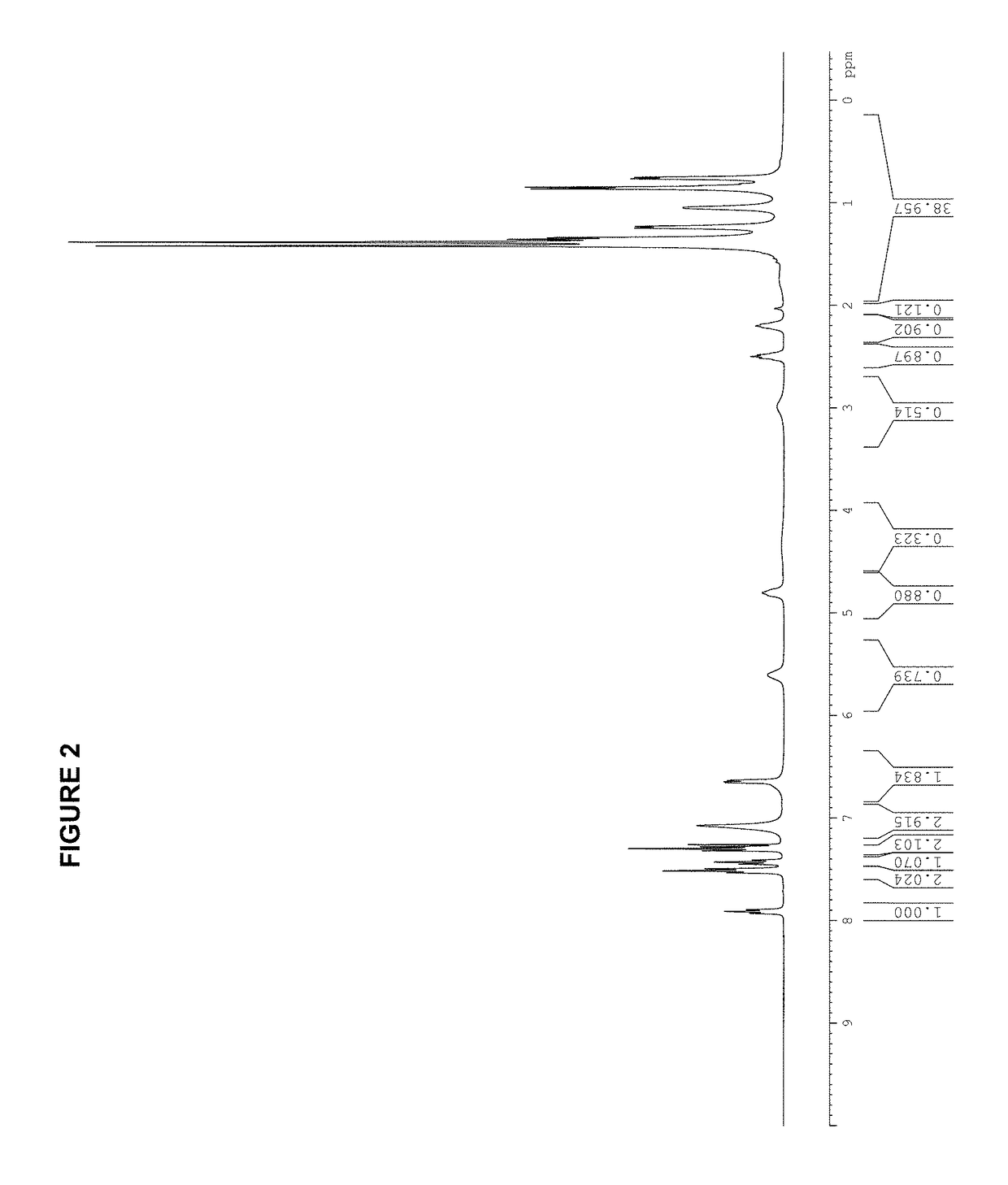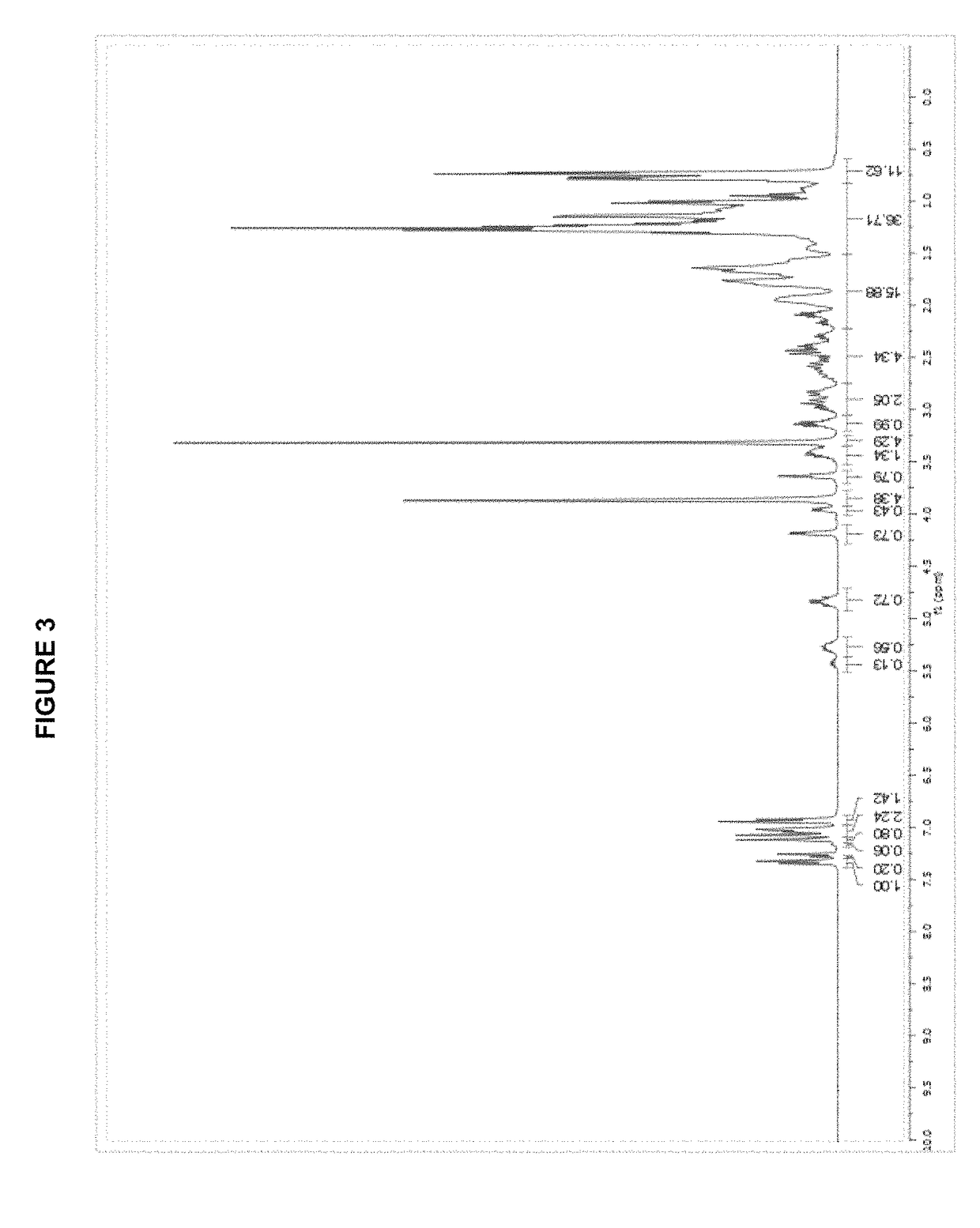Complexes
a technology of complexes and complexes, applied in the field of complexes, can solve problems such as difficulties in forming active catalysts and poor function
- Summary
- Abstract
- Description
- Claims
- Application Information
AI Technical Summary
Benefits of technology
Problems solved by technology
Method used
Image
Examples
example 1 (
According to the Invention)
[(π-allyl)Pd(tBuBrettPhos)]OTf
[0291]
[0292]A dry Schlenk flask is charged with 183 mg (0.50 mmol) of [(allyl)PdCl]2 and 257 mg (1.0 mmol) of silver trifluoromethanesulfonate. A second dry Schlenk flask is fitted with a Schlenk frit and is charged with 485 mg (1.0 mmol) of tBuBrettPhos. The flasks are evacuated and backfilled with nitrogen. This evacuation / backfill cycle was repeated a total of three times. 10 mL of anhydrous THF is added to the first flask and the mixture is stirred for 30 min at room temperature (rt) while protecting from light. The mixture from flask one is then transferred via cannula through the Schlenk frit into the second flask to remove the AgCl. The frit is rinsed with an additional 10 mL of anhydrous THF. The mixture is stirred at room temperature for 2 hours, followed by the slow addition of 30 mL of hexanes to obtain a pale yellow precipitate. It is filtered, washed (2×10 mL of hexanes) and dried in vacuo to give 653 mg (0.84 mmo...
example 2
[0293]The following complexes are prepared using substantially the same procedure of Example 1.
[(π-allyl)Pd(tBuXPhos)]OTf
[0294]
[0295][(allyl)PdCl]2 (183 mg, 0.50 mmol); AgOTf (257 mg, 1.00 mmol); tBuXPhos (425 mg, 1.00 mmol); THF (10.0 mL); 2 h. Product obtained as a slightly yellow solid (708 mg, 98%); 1H NMR (400 MHz, CDCl3, δ): 7.92 (t, J=7.3 Hz, 1H), 7.59-7.47 (m, 3H), 7.42-7.40 (m, 1H), 6.79 (dd, J=3.2 Hz, 7.5 Hz, 1H), 5.72 (sept, J=7.2 Hz, 1H), 4.49 (d, J=6.7 Hz, 1H), 3.52 (dd, J=9.0 Hz, 14.0 Hz, 1H), 3.03 (quint, J=7.1 Hz, 1H), 2.93 (d, J=12.9 Hz, 1H), 2.67-2.62 (m, 1H), 2.50 (quint, J=7.1 Hz, 1H), 2.26 (quint, J=6.9 Hz, 1H), 1.49-1.40 (m, 9H), 1.40-1.28 (m, 21H), 0.96 (d, J=6.7 Hz, 3H), 0.88 (d, J=6.7 Hz, 3H); 13C NMR (100 MHz, CDCl3, δ): 153.6, 152.7, 149.2, 146.0, 145.8, 135.1 (2 peaks), 134.9, 133.7, 133.6, 131.7, 131.6, 128.3, 128.2, 126.6, 126.2, 125.8, 122.6, 120.3 (2 peaks), 120.1 (2 peaks), 119.4, 116.2, 101.3, 101.1, 55.5, 38.3 (2 peaks), 38.2, 38.1, 33.9, 32.0, 31....
example 3 (
According to the Invention)
General Procedure
[0306]A dry Schlenk flask equipped with a Teflon-coated magnetic stir bar is charged with [(R-allyl)PdCl]2 (0.50 mmol, 0.50 equiv) followed by AgOTf (257 mg, 1.00 mmol, 1.00 equiv). The flask is fitted with a rubber septum evacuated and backfilled with nitrogen. This evacuation / nitrogen backfill cycle is repeated two additional times. Solvent (10 mL THF or 2-MeTHF) is added and the reaction mixture is stirred at it for 30 min while protected from light. A second dry Schlenk flask is equipped with a magnetic stir bar, fitted with a Schlenk frit, and charged with the appropriate ligand (1.00 mmol, 1.00 equiv). The flask is fitted with a rubber septum and it is evacuated and backfilled with nitrogen. This evacuation / nitrogen backfill cycle is repeated two additional times. The solution from the first Schlenk flask is transferred via cannula through the Schlenk frit (to remove AgCl) and into the second Schlenk flask containing the ligand, rins...
PUM
| Property | Measurement | Unit |
|---|---|---|
| temperature | aaaaa | aaaaa |
| temperature | aaaaa | aaaaa |
| temperature | aaaaa | aaaaa |
Abstract
Description
Claims
Application Information
 Login to View More
Login to View More - R&D
- Intellectual Property
- Life Sciences
- Materials
- Tech Scout
- Unparalleled Data Quality
- Higher Quality Content
- 60% Fewer Hallucinations
Browse by: Latest US Patents, China's latest patents, Technical Efficacy Thesaurus, Application Domain, Technology Topic, Popular Technical Reports.
© 2025 PatSnap. All rights reserved.Legal|Privacy policy|Modern Slavery Act Transparency Statement|Sitemap|About US| Contact US: help@patsnap.com



